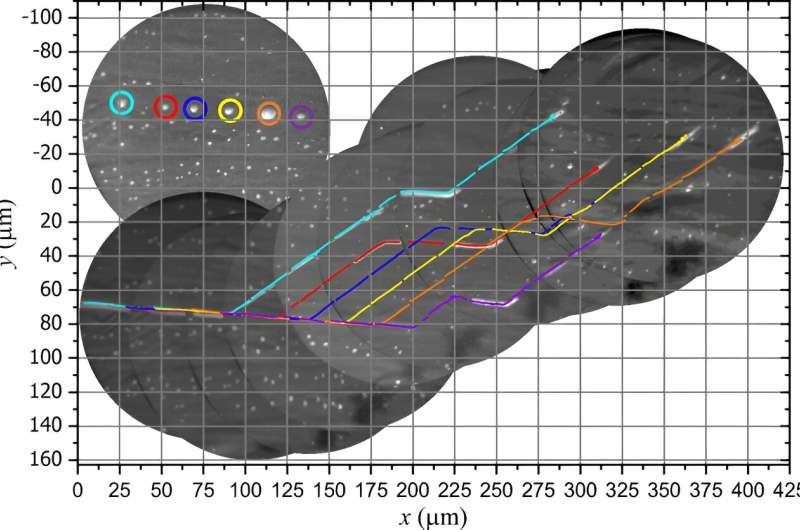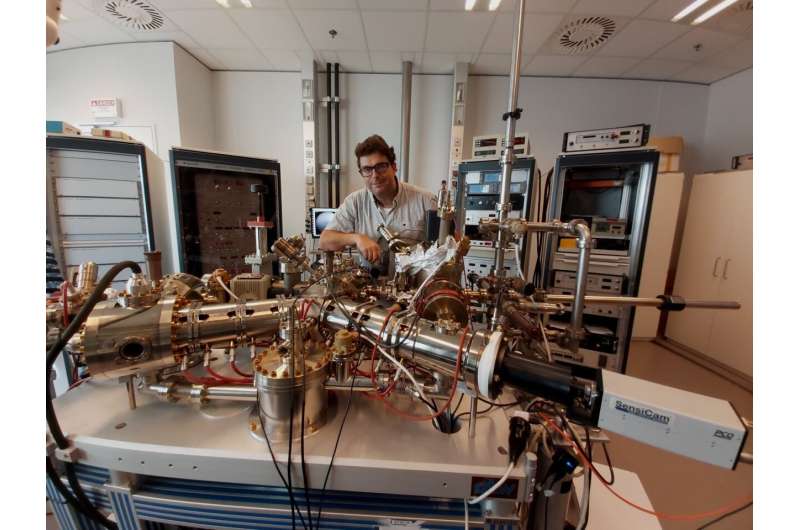This article has been reviewed according to Science X's editorial process and policies. Editors have highlighted the following attributes while ensuring the content's credibility:
fact-checked
peer-reviewed publication
trusted source
proofread
Nano droplets go skiing at high temperatures

Currently, many (nano)structures are grown in layers, one above the other, but their ordering on the atomic scale is generally far from perfect. Researchers from the University of Twente have aimed for a better understanding of these processes that can eventually lead to smaller, faster and overall better nanotechnology and have, in a worldwide first observation, discovered pre-solidification in droplet mixture. They recently published these exciting findings in the journal Physical Review Letters.
The droplets are composed of a mixture of the metals platinum and germanium and move on a heated substrate in the direction of the heat source. But as soon as the temperature lowers, the droplets start their unique behavior. Like professional skiers, they suddenly change their direction and make a slalom.
"Using a photo-emission electron microscope, we were able to film the skiing and show the whole process of solidifying," explains Arie van Houselt, corresponding author of the publication.
The skiing droplets form at surprisingly high temperatures. "This happens at ninety degrees above their eutectic point, which is the temperature at which these types of mixtures freeze. The droplets don't solidify all at once. They first elongate and then the solidifying process starts at the bottom. On their interface with the substrate," explains Van Houselt.
This first solid layer also explains the skiing. When the material solidifies, it gains a nanostructure which acts as a grid on which the droplet can move. The nanostructure lowers the resistance of the droplets in another direction. The droplets make use of this lowered resistance and make a sharp turn. They start moving in this direction.

This remarkable display isn't just an entertaining performance at the nanoscale. The conditions under which these droplets display their extraordinary skiing are close to those found in the growth of many (nano)structures, such as nanowires and germanene. Van Houselt states, "Discoveries like this one provide invaluable insights into the mechanisms of these transformations, potentially opening the doors to the creation of flawlessly engineered computer chips."
More information: Bene Poelsema et al, Presolidification in Eutectic Droplets, Physical Review Letters (2023). DOI: 10.1103/PhysRevLett.131.106201
Journal information: Physical Review Letters
Provided by University of Twente




















